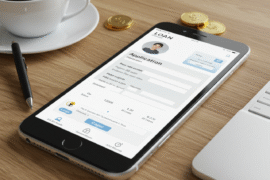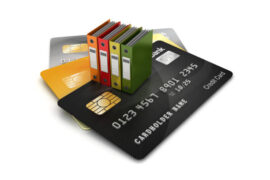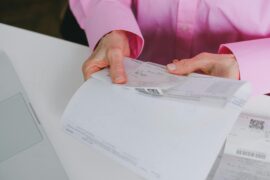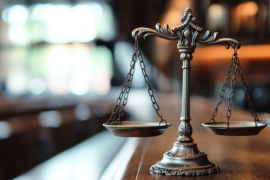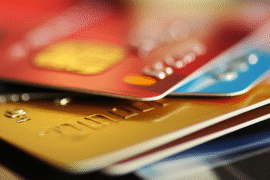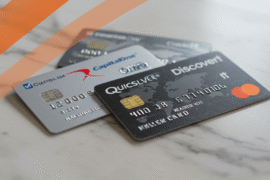This article may contain references to products or services from one or more of our advertisers or partners. We may receive compensation when you click on links to those products or services. Nonetheless, our opinions are our own.
The information presented in this article is accurate to the best of our knowledge at the time of publication. However, information is subject to change, and no guarantees are made about the continued accuracy or completeness of this content after its publication date.
How Bankruptcy Affects Your Financial Future
Bankruptcy significantly impacts your ability to secure loans and credit, but it doesn’t permanently close the door to financial recovery. While your credit score will drop substantially and remain on your credit report for 7-10 years, understanding how bankruptcy works and its long-term effects helps you make informed decisions about rebuilding your financial life.
The automatic stay that comes with bankruptcy filing provides immediate relief from creditor collections, but it also signals to future lenders that you’ve experienced serious financial difficulties. This creates challenges when seeking new credit, but with patience and strategic planning, you can gradually improve your borrowing options.
What Bankruptcy Means for Borrowers
Bankruptcy is a legal process designed to help individuals and businesses manage overwhelming debt through court-supervised solutions. The process either involves liquidating assets to pay creditors (Chapter 7) or creating a structured repayment plan (Chapter 13).
Filing for bankruptcy triggers an automatic stay that halts creditor collection activities, providing temporary relief while significantly lowering your credit score. This legal protection comes with long-term consequences that affect your ability to borrow money, secure favorable interest rates, and sometimes qualify for rentals or employment.
Chapter 7 vs Chapter 13 Bankruptcy Comparison
| Feature | Chapter 7 | Chapter 13 |
|---|---|---|
| Duration | Few months | 3-5 years |
| Asset Treatment | May require selling assets | Retain assets with repayment plan |
| Eligibility | Must pass means test | Requires consistent income |
| Credit Report Impact | Remains 10 years | Remains 7 years |
| Debt Discharge | Most debts eliminated | Partial debt forgiveness after completion |
Preparing for Post-Bankruptcy Loan Applications
Successfully obtaining a loan after bankruptcy requires thorough preparation and realistic expectations about your options. Start by reviewing your credit reports from all three bureaus—Equifax, Experian, and TransUnion to ensure accuracy and dispute any errors that could further damage your score.
Assess your current financial position by calculating your debt-to-income ratio, documenting steady income sources, and creating a realistic budget that demonstrates your ability to handle new debt responsibly. This preparation shows lenders that you’ve learned from past financial mistakes and are committed to responsible borrowing.
Essential Documentation Requirements
Lenders require comprehensive documentation when evaluating loan applications from bankruptcy survivors:
Identity and Residence Verification:
- Government-issued photo ID (driver’s license or passport)
- Proof of current address (utility bill or lease agreement)
Financial Documentation:
- Recent pay stubs or employment verification letters
- Tax returns from the past two years
- Current bank statements showing consistent deposits
- Updated credit reports from all three major bureaus
Having these documents organized and readily available demonstrates your commitment to financial responsibility and streamlines the application process.
Rebuilding Credit After Bankruptcy
Credit rehabilitation is the foundation of securing better loan terms in the future. This process requires consistent effort, patience, and strategic use of credit-building tools designed for individuals recovering from bankruptcy.
Begin by establishing a positive payment history through on-time payments for all bills, including rent, utilities, and existing debts. This demonstrates to future lenders that you’ve developed reliable financial habits and can be trusted with new credit responsibilities.
Starting Your Credit Recovery Journey
Immediate Steps:
- Open a checking or savings account to establish banking relationships
- Apply for a secured credit card with a cash deposit
- Monitor your credit reports monthly for improvements and errors
- Avoid multiple hard credit inquiries that can further damage your score
Long-term Strategies:
- Maintain low credit utilization ratios (below 30% of available credit)
- Pay more than minimum amounts on existing debts when possible
- Consider becoming an authorized user on a family member’s account with good payment history
Voted "Best Overall Budgeting App" by Forbes and WSJ
Monarch Money helps you budget, track spending, set goals, and plan your financial future—all in one app.
Get 50% OFF your first year with code MONARCHVIP
Loan Options Available After Bankruptcy
While your borrowing options may be limited initially, several loan types cater specifically to individuals recovering from bankruptcy. These loans typically carry higher interest rates but provide opportunities to demonstrate renewed financial responsibility.
Secured Personal Loans
Secured loans require collateral such as a vehicle, savings account, or other valuable asset to protect the lender’s investment. This security allows lenders to offer loans to bankruptcy survivors with more favorable terms than unsecured options.
The collateral requirement reduces the lender’s risk, often resulting in lower interest rates compared to unsecured alternatives. However, defaulting on payments could result in losing your pledged asset, making it crucial to ensure payment terms align with your current income and financial goals.
Co-signed Loan Arrangements
A co-signer with good credit can significantly improve your loan approval chances and secure better interest rates. The co-signer agrees to share responsibility for loan repayment, providing additional security for the lender.
This arrangement benefits both parties when managed responsibly, but missed payments can damage both your credit score and your co-signer’s financial standing. Clear communication and realistic repayment expectations are essential to protect both your relationship and financial futures.
Home Equity Lines of Credit (HELOC)
Homeowners may qualify for HELOCs that allow borrowing against home equity at relatively low interest rates. These credit lines provide flexible access to funds for various purposes, from home improvements to debt consolidation.
However, your home serves as collateral, creating the risk of foreclosure if you cannot meet payment obligations. Only consider HELOCs when you’re confident in your ability to maintain consistent payments and have a solid long-term financial plan.
Dangerous Loan Products to Avoid
Not all lending options serve the best interests of bankruptcy survivors. Certain high-risk loan products can trap borrowers in cycles of debt that undermine credit recovery efforts and financial stability.
High-Interest Personal Loans
Predatory lenders targeting individuals with poor credit often advertise quick approvals while charging excessive APRs that can exceed 35% annually. These loans create monthly payment obligations that can quickly become unmanageable.
Be wary of lenders requesting upfront fees, making unrealistic promises, or lacking transparency about loan terms and conditions. Legitimate lenders will always provide clear terms and conduct appropriate credit assessments before approval.
Payday Loan Risks
Payday loans may seem like convenient short-term solutions, but they typically involve extremely high fees and brief repayment periods that create more financial problems than they solve. The average payday loan carries APRs exceeding 400%, making them particularly dangerous for individuals rebuilding their financial lives.
Focus instead on structured credit-building options like secured credit cards or credit-builder loans that contribute positively to your long-term financial recovery goals.
FAQs
How long after bankruptcy can I apply for a loan?
You can technically apply for loans immediately after bankruptcy discharge, but your approval chances improve significantly if you wait 12-24 months while actively rebuilding your credit. This waiting period allows you to demonstrate consistent financial responsibility and potentially secure more favorable terms. Many lenders prefer to see at least one year of positive payment history before considering loan applications from bankruptcy survivors.
How can I raise my credit score after bankruptcy without taking on more debt?
Focus on making all existing payments on time, including utilities, rent, and any remaining debts from your bankruptcy case. Consider becoming an authorized user on a family member’s credit card account with excellent payment history, which can positively impact your credit score without requiring new debt obligations. Additionally, regularly monitor your credit reports for errors and dispute any inaccuracies that could be suppressing your score recovery.
Are there any lenders that focus on loans for people with a past of bankruptcy?
Yes, several specialized lenders cater to borrowers with bankruptcy histories, including credit unions, community banks, and online lenders that focus on second-chance lending. These lenders typically require higher interest rates or collateral but provide pathways to credit rebuilding. Research lenders that explicitly advertise services for credit-challenged borrowers and compare their terms carefully before applying.
Closing Insights
Securing loans after bankruptcy requires patience, preparation, and strategic decision-making throughout your financial recovery journey. While the process presents challenges, including higher interest rates and limited options, bankruptcy doesn’t permanently disqualify you from accessing credit. Success depends on consistently demonstrating improved financial responsibility through on-time payments, careful debt management, and avoiding predatory lending traps. Focus on rebuilding your credit score through secured credit products and responsible banking relationships while preparing comprehensive documentation for future loan applications. Remember that bankruptcy represents a fresh start rather than a permanent financial sentence—with time and discipline, you can gradually access better borrowing opportunities. Most importantly, approach post-bankruptcy lending with realistic expectations and prioritize loans that support your long-term financial stability rather than creating additional debt burdens.

Reviewed and edited by Albert Fang.
See a typo or want to suggest an edit/revision to the content? Use the contact us form to provide feedback.
At FangWallet, we value editorial integrity and open collaboration in curating quality content for readers to enjoy. Much appreciated for the assist.
Did you like our article and find it insightful? We encourage sharing the article link with family and friends to benefit as well - better yet, sharing on social media. Thank you for the support! 🍉
Article Title: Getting Loans After Bankruptcy: Complete Recovery Guide
https://fangwallet.com/2025/08/19/getting-loans-after-bankruptcy-complete-recovery-guide/The FangWallet Promise
FangWallet is an editorially independent resource - founded on breaking down challenging financial concepts for anyone to understand since 2014. While we adhere to editorial integrity, note that this post may contain references to products from our partners.
The FangWallet promise is always to have your best interest in mind and be transparent and honest about the financial picture.
Become an Insider

Subscribe to get a free daily budget planner printable to help get your money on track!
Make passive money the right way. No spam.
Editorial Disclaimer: The editorial content on this page is not provided by any of the companies mentioned. The opinions expressed here are the author's alone.
The content of this website is for informational purposes only and does not represent investment advice, or an offer or solicitation to buy or sell any security, investment, or product. Investors are encouraged to do their own due diligence, and, if necessary, consult professional advising before making any investment decisions. Investing involves a high degree of risk, and financial losses may occur including the potential loss of principal.
Source Citation References:
+ Inspo
There are no additional citations or references to note for this article at this time.















